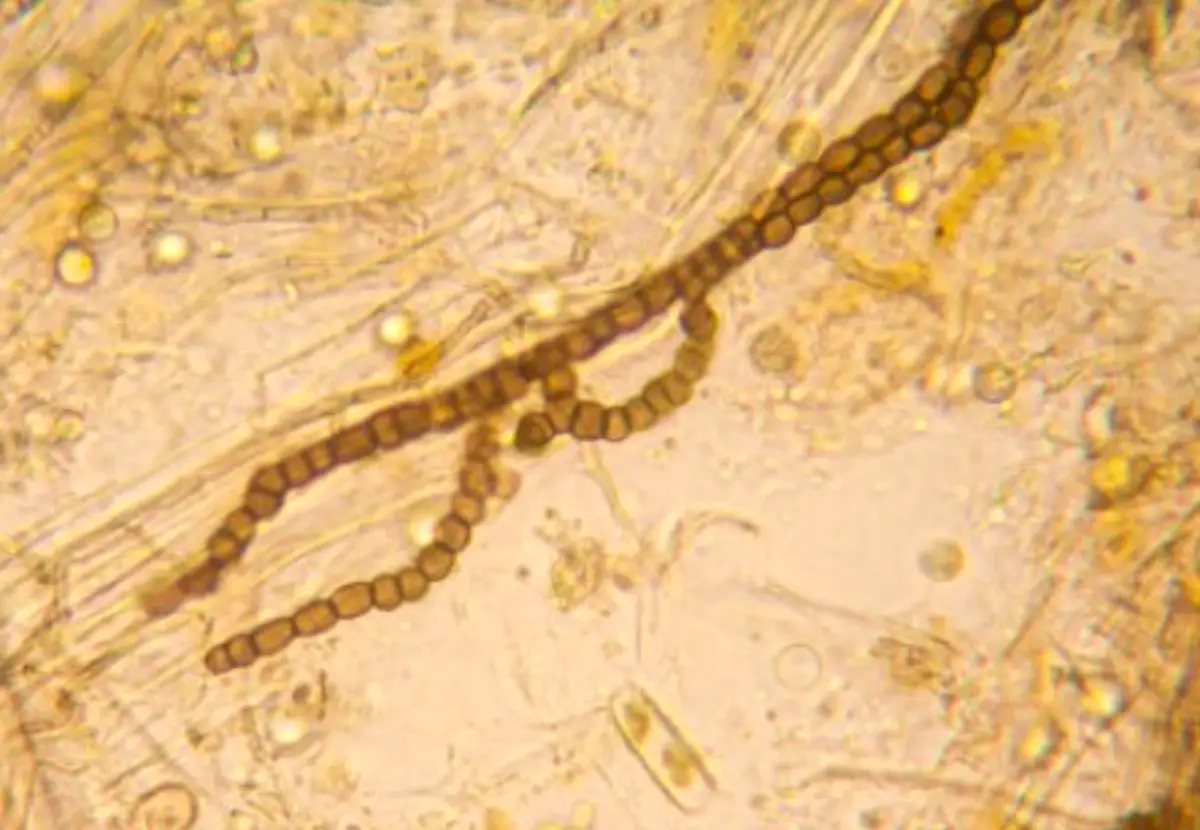Contents
CLASSIFICATION OF NOSTOC
Sub-division :- Algae
Class :- Myxophyceae
Order :- Nostocales
Family :- Nostocaceae
Genus :- Nostoc
Nostoc commonly occurs in abundance after the first few rains. It is terrestrial as well as aquatic. It is collected from water pools, paddy fields, waterlogged soil, moist rocks, stagnant water, etc. It is known to occur as epiphyte on aquatic weeds and endophytically inside Cycas coralloid roots, Azollaa fern, Blasia and Anthoceros –bryophytes and form lichens in association with fungal members.
EXTERNAL FEATURES OF THALLUS
- Thallus is colonial. Young colonies are microscopic, spherical and solid.
- Mature colonies become irregular and hollow.
- Colonial envelope encloses many filaments. These are much twisted, curved and entangled with each other.
- A filament has diffluent gelatinous sheath.
- The trichomes are unbranched. Each trichome is made of cells of uniform size and shape except those called heterocyst which occur throughout.
- Structure of a cell is typically cyanophycean. It has a centrally located centroplasm, nucleus being altogether absent. Peripheral cytoplasm shows diffused pigments. A few shining cyanophycean granules are also present in this region.
- Heterocysts are intercalary. These are double walled, pale yellow coloured with two shining polar granules, one each near the neighbouring cell on either side. Heterocysts are much of the same size of slightly bigger than the vegetative cells.
STUDY THE AKINETES
- Akinetes are developed only in a mature colony. These occur in large number, in series between two heterocysts. Usually all vegetative cells between two successive heterocysts develop into akinetes.
- Akinetes are thick walled, sometimes ornamented, rich in food reserves and cyanophycean granules.
- Akinetes are liberated due to decay of colonial sheath. These germinate to form a new thallus.
IDENTIFICATION OF Nostoc
- Sub-division – Algae
- Thallus simple,
- Chlorophyll present.
- Cell walls of cellulose.
- Class – Myxophyceae
- Chromatophore not organised, pigments diffused, blue-green.
- Photosynthetic reserve cyanophycean starch.
- True nucleus absent.
- Sexual reproduction absent.
- Order – Nostocales
- Thallus with trichomes, unbranched, or with false branching.
- Hormogones, heterocysts, exospores and endospores generally present.
- Family – Nostocaceae
- Trichomes simple, unbranched, uniseriate and approximately of the same diameter throughout.
- Heterocysts and akinetes present,
- Trichomes not differentiated.
- Genus– Nostoc
- Trichomes much twisted into a mass of definite form with a firm colonial envelope,
- Heterocysts intercalary and single.


Leave a Reply